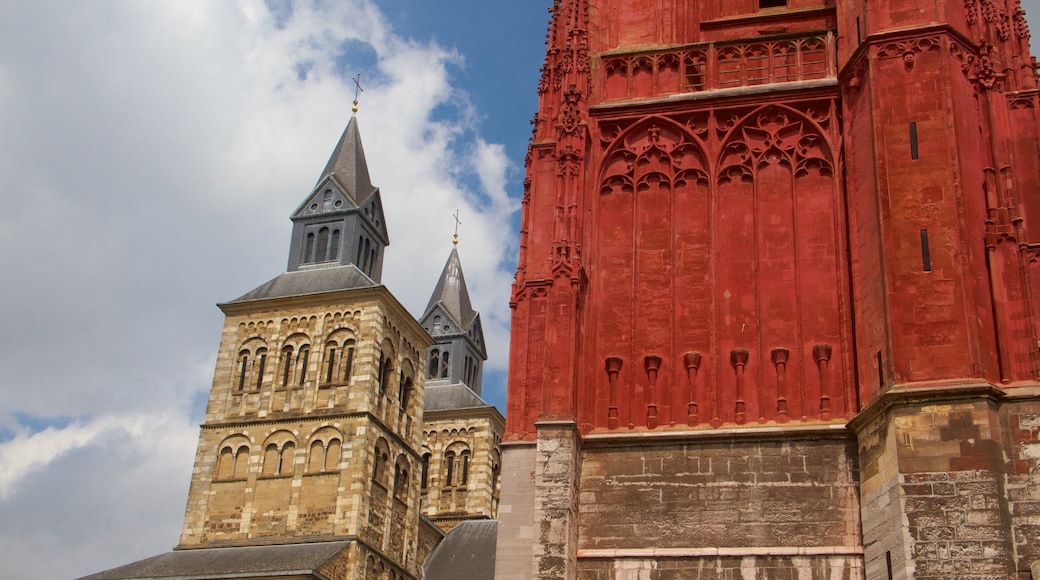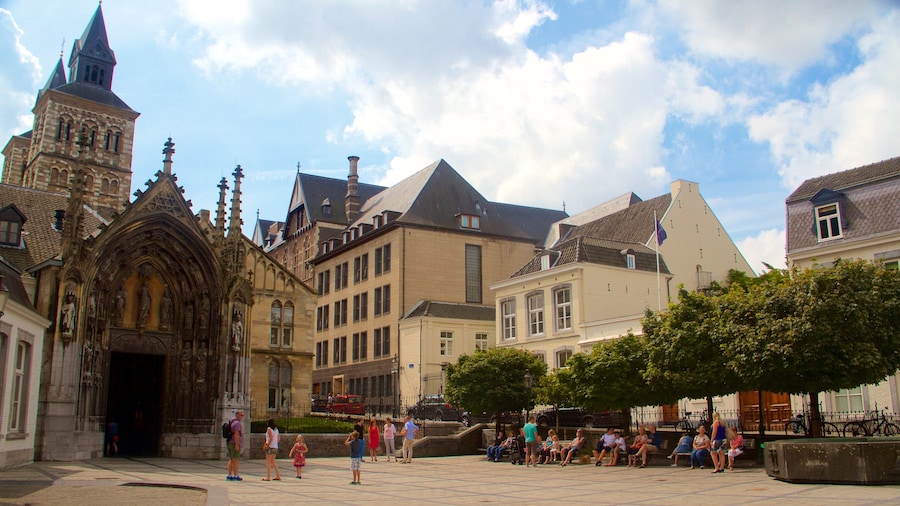Medieval St. Janskerk (St. John’s Church) was originally built as a baptistery for the Basilica of St. Servatius. After the 17th century it became a church in its own right, so Maastricht now has “twin” churches facing each other. Look for this unique setting with dual adjacent spires.
Inside St. Janskerk, look for frescos from the 13th century, an organ from 1780 and elaborately carved gravestones from after the Protestant reformation. Most of the building dates from the 15th century. Although it was originally built in the 1100s, it was largely destroyed by extreme winds and had to be rebuilt. Much of the structure is made from the yellow marlstone found in Maastricht, which unfortunately absorbs sound, causing acoustic havoc for the choir.
The church’s tower, based on that of the Utrecht Cathedral, stands 230 feet (70 metres) tall and is a distinctive red colour. It is said to have been painted with oxblood to protect the soft marlstone. For a small fee, climb the tower for a fantastic view over Maastricht’s attractions, such as the rocket-shaped Bonnefanten Museum. On Sunday St. Janskerk is closed to tourists for the Protestant services that are still held there.
After your visit to St. Janskerk, step inside the Basilica of St. Servatius, built on the spot where the saint himself, the first bishop of Maastricht, is thought to have been buried. It has been a popular site for pilgrimages throughout the centuries. Servatius’ remains are kept in a crypt in the Treasury, which is also home to a collection of historic religious artworks and artifacts. Visit the excavations beneath the basilica where an earlier 6th-century church has been discovered.
St. Janskerk is in the centre of Maastricht. To add to the day’s church tour, walk just 5 minutes to reach Dominicanenkerk, the former Dominican Church, now a bookstore.









